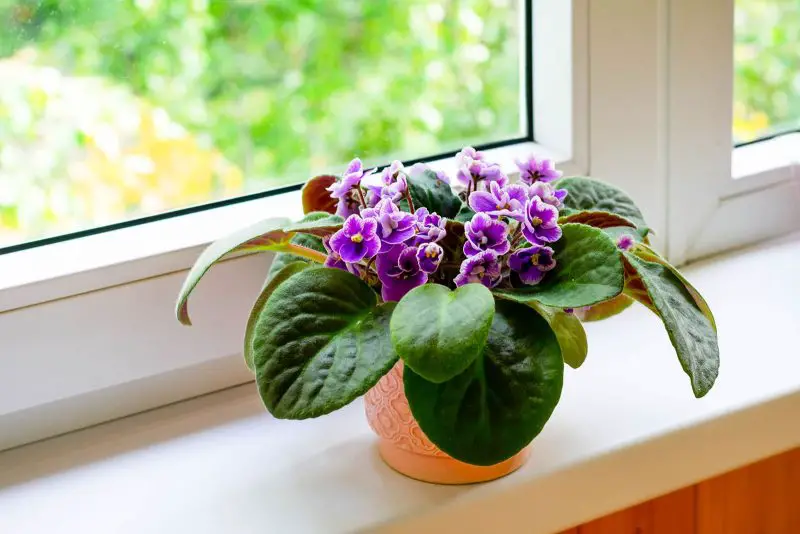African violets, known scientifically as Saintpaulia, are among the most cherished houseplants thanks to their vivid blooms and velvety foliage. Native to the cloud forests of East Africa, these plants have earned a global fan base due to their compact size, long-lasting flowers, and relative ease of care. However, to keep them consistently thriving and blooming, beginners must understand the unique environmental preferences that African violets require.
This ultimate guide covers everything from proper lighting to troubleshooting, helping you build confidence and grow beautiful, healthy plants.
Understanding African Violet Basics

To successfully care for African violets, it is important to start with an understanding of what makes them unique. African violets naturally grow in filtered sunlight under tree canopies, in climates with high humidity and moderate temperatures. Their compact rosettes of fuzzy leaves are sensitive to environmental changes, and their roots prefer moist but well-draining soil. These characteristics influence nearly every aspect of how they should be grown indoors.
Unlike many other houseplants, African violets bloom repeatedly under the right conditions. Their blossoms appear in various shades of purple, pink, blue, and white, and the foliage is just as attractive, often forming symmetrical patterns. Understanding the plant’s natural habitat offers key insight into replicating those conditions in your home. This foundational knowledge will help you make informed decisions as you establish a care routine tailored to their needs.
When first bringing an African violet into your space, it’s helpful to observe how it reacts to light, moisture, and temperature. Paying attention to these early signs can help prevent issues later. Over time, you’ll learn to read the plant’s cues and adjust your care approach accordingly, developing a satisfying relationship with one of the most charming flowering plants available for indoor gardeners.
Providing the Right Light Conditions
Light plays a vital role in the health and blooming cycle of African violets. These plants prefer bright, indirect light, which mimics the dappled sunlight they receive in their native environment. A common mistake made by beginners is either exposing them to too much direct sun, which can scorch the leaves, or placing them in dim areas, which can lead to weak growth and lack of flowers.
A north- or east-facing window is often the best location for African violets. These orientations provide ample light without the harsh intensity of direct midday sun. If you do not have access to suitable natural light, you can still grow African violets successfully under artificial lighting. Fluorescent or LED grow lights placed about 10–12 inches above the plants for around 12–14 hours a day can help mimic ideal conditions and stimulate consistent blooming.
To ensure uniform growth, rotating the pot a quarter turn every week can prevent your African violet from leaning toward the light source. This habit encourages a symmetrical rosette and helps maintain even exposure. By closely observing how the plant responds to its light environment, you can adjust accordingly and encourage a lush, flower-filled plant all year round.
Finding the Ideal Temperature and Humidity
African violets thrive in environments with temperatures that mirror their native range, which generally falls between 65°F and 75°F. Maintaining this temperature range consistently helps keep the plant vigorous and blooming. They are sensitive to cold drafts and heat spikes, so avoid placing them near air conditioning vents, radiators, or open windows during extreme weather.
Humidity also plays an important role in African violet care. These plants prefer a relative humidity of around 50–60 percent. In dry indoor environments, especially during winter, the air may become too arid for African violets to thrive. Signs of low humidity include leaf curling, browning edges, and poor flowering.
To increase humidity around your plants, consider grouping several houseplants together to create a localized microclimate. You can also place a shallow tray filled with water and pebbles beneath the pot to raise humidity through evaporation. However, it is essential that the pot is not sitting directly in water, as overly wet conditions can lead to root rot. A consistent and balanced approach to humidity will help your African violet grow strong and bloom more frequently.
Watering Techniques for Healthy Growth
Watering African violets properly can be one of the trickiest parts of their care, especially for beginners. These plants are very particular about how and when they receive moisture. They dislike both overwatering and drying out completely. The key is to maintain evenly moist soil without allowing the roots to sit in water.
One common method is to water from the bottom. This involves placing the pot in a shallow dish of water and allowing the soil to absorb moisture through the drainage holes. After about 30 minutes, any remaining water should be discarded to prevent waterlogging. This technique helps avoid splashing water on the fuzzy leaves, which can cause spotting and encourage rot.
It’s also important to use room temperature water, as cold water can shock the roots and damage the plant. Always check the top inch of the soil before watering again. If it feels dry, it’s time to water. If it’s still moist, wait a few more days. By staying in tune with your plant’s moisture needs, you’ll reduce the risk of common problems and promote steady, healthy growth.
Choosing the Right Potting Mix
African violets require a well-draining, porous potting mix that allows for ample oxygen flow to the roots. Regular potting soil is often too dense for these plants and can lead to root suffocation and rot. A specialized African violet mix, available at most garden centers, is usually your best option.
These mixes typically contain peat moss, vermiculite, and perlite in proportions that retain moisture without creating soggy conditions. Peat moss helps retain just enough water, while perlite and vermiculite contribute to aeration and drainage. If you prefer to make your own mix, combining two parts peat moss with one part perlite and one part vermiculite creates an ideal balance.
Repotting African violets once or twice a year helps refresh the soil and prevent compaction. When repotting, choose a container that’s only slightly larger than the plant’s root system, as African violets bloom more profusely when slightly root-bound. Consistently using the right potting mix is foundational to keeping your plants vigorous and flowering.
Feeding African Violets for Continuous Blooming
Nutrition plays a critical role in African violet health and flowering. While these plants don’t require heavy feeding, they do benefit from regular doses of balanced fertilizer, particularly one formulated for blooming houseplants. A fertilizer with a higher middle number in the N-P-K ratio, which represents phosphorus, can promote flower development.
Applying a diluted liquid fertilizer every two to four weeks during the growing season helps maintain healthy foliage and encourages buds to form. Over-fertilizing, however, can lead to salt buildup in the soil and damage roots. If you notice white crusts forming on the surface of the potting mix or leaf tips turning brown, it may be a sign of fertilizer burn.
Flushing the soil with water occasionally helps wash away accumulated salts and keeps the root zone clean. For best results, always follow the manufacturer’s instructions and observe how your plant responds. A balanced feeding schedule supports lush leaves and continuous, colorful blooms throughout the year.
Pruning and Grooming African Violets
Keeping African violets tidy and healthy involves regular pruning and grooming. This not only improves the plant’s appearance but also enhances airflow and reduces the risk of disease. Deadheading, or removing spent blooms, encourages new flower production by preventing the plant from putting energy into seed formation.
Gently pinch off dead flowers and yellowing leaves using your fingers or sterilized scissors. It’s best to remove leaves that are damaged or drooping near the bottom of the rosette, as they can trap moisture and invite fungal issues. Trimming these away allows the plant to focus its energy on producing fresh growth and flowers.
Occasional grooming also gives you a chance to inspect the plant for pests or signs of stress. By keeping your African violet clean and neat, you’ll promote a longer lifespan and a more attractive overall appearance, making your plant a true centerpiece of your indoor garden.
Propagating African Violets from Leaf Cuttings
One of the joys of growing African violets is the ease with which they can be propagated from leaf cuttings. This method allows you to expand your collection or share your favorite varieties with friends. The process begins with selecting a healthy, mature leaf with an intact stem, which is then cut and inserted into moist potting mix or water to encourage root development.
Within a few weeks, tiny new plants—known as plantlets—will emerge at the base of the leaf cutting. Once these plantlets have developed several leaves and a strong root system, they can be separated and potted individually. This process is especially rewarding for beginners, as it provides a hands-on way to learn about plant growth and care.
Propagation also helps rejuvenate older plants that may be losing vigor. By starting new plants from your best-performing specimens, you maintain a thriving collection and ensure that your African violets continue to brighten your indoor space for years to come.
Recognizing and Treating Common Problems
Even with careful attention, African violets can occasionally encounter issues. Yellowing leaves, wilting, or poor blooming can be signs that something is off in their environment. Overwatering is one of the most common causes of distress and can lead to root rot if not addressed promptly.
Pests such as mealybugs, spider mites, and thrips can also affect African violets. These pests often hide beneath leaves or within blooms, making them hard to detect at first. Washing the leaves with a mild soap solution or applying insecticidal soap can help control infestations. It’s essential to act quickly to prevent damage from spreading.
If your plant suddenly stops blooming, it may be due to insufficient light, incorrect feeding, or root congestion. Assess each element of care and make gradual adjustments. African violets are resilient and usually bounce back with improved conditions. Learning to recognize the early signs of trouble will give you the confidence to troubleshoot effectively.
Creating the Perfect Display and Environment
Beyond individual care, displaying your African violets in an appealing setting can enhance both their beauty and your enjoyment. Grouping several violets with complementary bloom colors in decorative containers can create a stunning visual effect. Ensuring that each pot has adequate drainage while matching your aesthetic preferences is key.
African violets appreciate stable surroundings, so choose a display location that maintains consistent temperature, light, and humidity. Avoid frequent relocation or exposure to drafts. Many growers dedicate a small plant shelf or windowsill specifically for their violet collection, complete with grow lights and humidity trays to support optimal growth.
Creating a serene and functional display not only highlights the elegance of African violets but also provides a peaceful corner where you can enjoy the meditative act of caring for your plants. Over time, this space becomes a living gallery that reflects your commitment to nurturing life and beauty.
Building Confidence as a Beginner Grower
Embarking on the journey of growing African violets can be incredibly rewarding for beginners. These delicate-looking yet hardy plants teach important lessons about observation, consistency, and patience. With each success—whether it’s a new bloom, a propagated cutting, or recovering from a setback—you’ll build greater confidence in your abilities as a grower.
Documenting your care routine in a journal or digital log can help you track what works best in your environment. Each plant has its own personality, and learning to meet their individual needs is part of the joy. Celebrate the small victories and embrace the learning process without fear of making mistakes.
With dedication and care, African violets will reward you with vibrant flowers, lush foliage, and a sense of fulfillment that grows with each passing season. They are the perfect plant for beginners who want to deepen their connection with nature and explore the beauty of home gardening.
Frequently Asked Questions about African Violet Care
What is the best location to grow African violets indoors?
The ideal spot for African violets is a bright location with indirect sunlight, such as a north- or east-facing window. They thrive in stable environments with consistent light and moderate humidity.
How often should I water African violets?
Water when the top inch of soil feels dry. It’s better to water from the bottom to avoid wetting the leaves, which can cause spotting or rot. Use room temperature water to prevent shock.
Why won’t my African violet bloom?
A lack of blooms may result from low light, overwatering, poor nutrition, or being root-bound. Evaluate each care factor and make adjustments gradually to stimulate flowering.
Can I use regular potting soil for African violets?
Regular potting soil is too dense for African violets. Use a light, well-draining mix specifically formulated for them or make your own with peat moss, perlite, and vermiculite.
How do I propagate African violets?
Propagation is done by planting a healthy leaf with a short stem in moist soil or water. New plantlets will grow from the base of the cutting and can be potted individually once mature.
Conclusion
Caring for African violets may seem delicate at first, but with attention to light, water, soil, and temperature, even beginners can succeed. As you grow more familiar with their needs, these charming plants will reward your efforts with vibrant blooms and lush foliage. With patience and consistency, African violets can become one of the most rewarding additions to your indoor garden.






